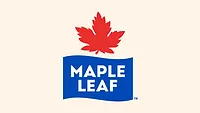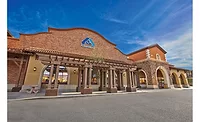Food Integrity: Innovation, Transparency and Trust

In the first of this series of articles, we introduced food protection as a concept at the foundation of the goal we called food integrity. We proposed a model[1] to help us investigate the interplay of food safety, food security, food defense and food sustainability on food integrity. In the second article, we started to explore how they interact, which required a definition for each of these terms. The hypothesis was that the four aspects of food protection each contribute and interact in their own way as the means to achieve the goal of food integrity.
We placed food security prominently in our model, because it is a fundamental need for people. It connects with the other three aspects of food protection. In this context, we take into account food security when we make decisions and take action on food safety and as we build a food safety culture into our organizations. Food security influences and is influenced by each of the others. Food security guides the efficiency and effectiveness of food safety. In turn, food safety strengthens food security; it informs the practical ways of inspiring confidence in the food we eat, lowering or eliminating foodborne illness.
Food sustainability is tougher to consider because it is fraught with baggage. How is this so? We said that food sustainability is the result obtained from all activities in the food system, so that food enhances a community’s environmental, economic and social well-being. Why is this so challenging?
It is partly due to the byzantine network of steps that bring food from farm to fork; however, there are other systemic reasons. There is close interplay between the physical aspects of producing food and the financial realities of business; there are also the political and cultural (even religious) realities of food production and consumption, along with the impact that producing food has on our environment. Finally yet importantly, there are the very genuine personal physiological and psychological impacts that food has on us all. With so many perspectives, it is understandable that food sustainability becomes complicated and complex to us.
At a pragmatic level, what does this all mean in terms of our food integrity model? If the value of food sustainability is that it is the operational result of food safety, food defense and food security, then the other three elements directly influence it. In a real way, they are said to operationalize, or bring into being, food sustainability. This suggests a solution to our confusion.
We said that food safety and defense drive the efficiency of food sustainability efforts; they are the means to align our need for safe food with confidence in the food we eat. Food security, on the other hand, drives the impact or the effectiveness of food sustainability; food security directs how our food system fits within a larger world and our view of it. How does this affect the actions of a farmer, or food distributor or manufacturer, or food service outlet? How does it impact the food system?
When considered through this lens, it is no longer be surprising that food sustainability has become a cacophony of programs, stratagems and actions. Our model tells us that sustainability is an outcome of all the stream of activities in the other areas. Therefore, it stands to reason that the more we understand the interrelationship and collaboration of activities in those elements, the more efficient and effective will be efforts to improve food sustainability. As alignment strengthens, the ‘higher’ we rise up the model towards our goal of food integrity.
What happens when we act in ways where these actions do not align? Our model says we lose efficiency and effectiveness—and operationalization suffers. It takes more energy, material, labor and money: more of many scarce resources, to build food sustainability. Sound familiar? For example, we know waste is a major crisis facing the food system. Between now and 2050, it is projected that the food system must produce 70 percent more than currently. How is this possible when we now waste more than 30 percent of what we produce? Now we can see that waste is directed impacted by food safety, food defense and food security. So we need to advance on all three in alignment to be most efficient and effective.
The strongest step we can take is to stop considering each element of food integrity in isolation and start acting in more collaborative ways on food safety, food defense and food security. While resources always are needed, we really require more innovation, more transparency and more trust to achieve our goal. In short, we need more of the things that are infinitely available. The actors in the system must expand their perspective and way of thinking to realize improved results.
To achieve food integrity, we know we must become more efficient and effective. Regulators, businesses and other stakeholders within the food system—from farm to fork—must act collaboratively through the various elements in our model. This will be the most positive way to succeed. Without innovation, transparency and trust, we will fall short; we will suboptimize food integrity and continue with a less efficient and effective system. We no longer can afford to do so.
Brian Sterling is president/CEO of SCS Consulting.
Reference
1. www.food-safety.com/enewsletter/food-integrity-connecting-the-elements-of-a-larger-vision/.
Looking for quick answers on food safety topics?
Try Ask FSM, our new smart AI search tool.
Ask FSM →








